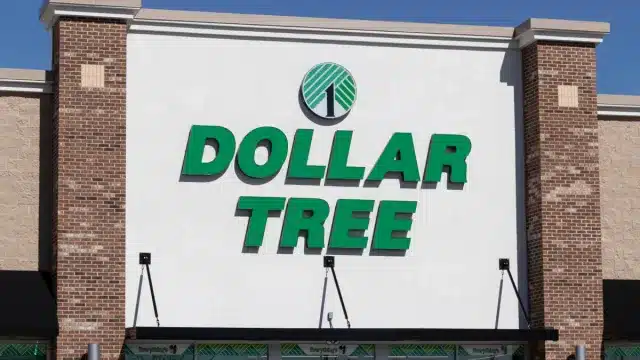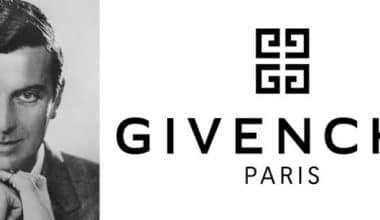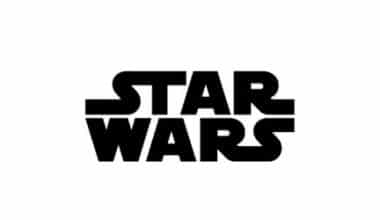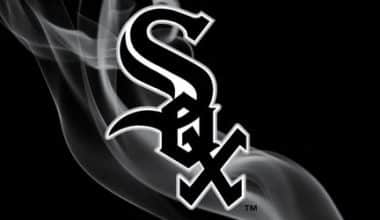Dollar Tree was founded in 1986 and has since grown to become one of the most successful and well-known retail companies in the United States. Although you may now recognize Dollar Tree as a fully functional and reasonably priced store that you frequent for your shopping requirements, it wasn’t always the store that we know today.
The Dollar Tree has become an iconic and hugely popular store, but its story begins differently than you might think. We wouldn’t be as familiar with Dollar Tree or link the green and black emblem with the company if it didn’t have its renowned logo.
With over 15,000 variety stores across North America, this company has established itself through smart branding and a strong visual identity, and it offers a wide range of products at reasonable prices. This visual identity has been seen all around the world and has become an important and iconic aspect of the store. There’s no doubt that you’re already aware of this logo, but you might not be as familiar with its history.
Let’s look at the history of Dollar Tree, its logo, and everything else that’s interesting, then keep reading to discover amazing facts about Dollar Tree that you won’t want to miss!
The Dollar Tree Logo: Complete History
The First Logo Concept (1986-1991)
When we look at the first concept, we can’t really call it a logo to begin with. When the company first started and presented its first logo concept in 1986, it looked nothing like what we know now. You may assume a tree picture would be appropriate for a store called Dollar Tree, but keep in mind that Dollar Tree was formerly known as “Only $1,” and the first logo proposal had a neon banner with the store name.
The logo was designed in a pink and green color scheme, with the first word of the name in pink and the second in green. The arrows displayed between the letters are the only part of the design that stands out and serves as the logo symbol. The letters pointing to ‘$1.00’ are shown in pink. This early logo is distinct from the logo we know today, and while it had a unique start, it was nonetheless a great start for the organization.
The Second Logo Concept (1991 – 2006)
Five years after the initial logo was introduced, the company was rebranded and a new logo was introduced. This wasn’t just a new logo for the parent company; it was a thorough rebranding in which practically every part of the business was altered. This time, the corporation chose to go in a new path with its logo, instead incorporating what is now known as the famous tree. This logo was entirely redesigned from the old one, and it now incorporates a play on the company name as well.
This logo features a tree trunk made of the number 1 sign and green foliage made of folded dollar bills above it. When compared to the bright and dark greens above, the black tree trunk stood out. The company name was also printed in black below the logo, and the inscription was shown below the logo symbol in a unique font that added character. Every element was colorful and a bright aspect of the firm, giving it a new and expressive personality.
The Logo Today (2006-Present)
The second version of the logo was used by the corporation for nearly a decade before being replaced with the current logo. When we break down this makeover, we can see that the wording underneath the design was the key portion of the logo that was updated. Previously, the text was smaller than the design, with the letters defined and centered beneath the design. The creators focused primarily on changing the company name to make it bolder and stand out on the logo in the new design.
This logo displays the company name in larger letters, making the symbol a smaller part of the design and focusing attention on the name. Instead of using the previous logotype, they chose a bolder and stronger typeface. The letters now appear more confident, and instead of black, they are shown in the same dark green that is used for part of the symbol. This not only makes the logo bolder and more representative, but it also helps to build the company’s reputation and gives it a new look.
This logo was designed in 2006 and hasn’t changed much since then. The logo has become a symbol of the company and is now synonymous with the Dollar Tree Store. When we see the green, black, and white logo, we immediately think of the iconic retail store with locations all over the country. It took a few designs, but the Dollar Store eventually found the perfect logo for them and one that accurately represents their company. We know that without this logo, the company would not be what it is today, nor would it be as popular.
Elements of the Dollar Tree Logo Design
Symbol:
They decided to capitalize on the Dollar Tree brand name because it is a very strategic marketing move that attracts customers.
To do this, the logo designers used the idea of a dollar bill as the basis for the company’s visual identity. So, the people who made the logo chose an image of a dollar sign and a round coin made of thin strips.
Color:
The font used for the Dollar Tree logo was similar to the Chorus Bold font but with significant changes. It was later replaced by the Helvetica Neue Black Italic font, which was created by Swedish graphic designers Max Miedinger and Eduard Hoffmann in 1957.
Font:
Dollar Tree’s visual identity’s color scheme is associated with money themes. Green (the color of physical American dollar bills) can be found everywhere. White (background) and black (number 1) are also used.
Dollar Tree’s History
Dollar stores can be found all over the United States. They are commonplace and inexpensive, succeeding the 5-and-dime retail outlets of the 1800s.
They sell everything from lipstick to milk and are the best place to stock up on daily essentials for your bathroom, fridge, and wardrobe. Dollar Tree is one of America’s and Canada’s largest and most popular dollar stores.
The quality of Dollar Tree’s goods can be questionable at times, but everyone agrees it’s a fantastic place to go on a budget shopping spree. While we are all aware of its low-cost offers, you may be unaware of its history.
This is how Dollar Tree became what it is today.
Early Childhood
In 1953, K. R. Perry opened a Ben Franklin retail variety store in Norfolk, Virginia, which he later renamed K&K 5&10.
Then, in 1970, K.R. Perry started K&K Toys with Macon Brock and Doug Perry. This was still in Norfolk, Virginia. This mall concept expanded to more than 130 outlets on the East Coast of the United States.
In 1986, Macon Brock, Doug Perry, and Ray Compton launched another retail chain called “Only $1.00,” with five locations in Virginia, Tennessee, and Georgia. The dollar store and K&K Toys store expansions continued, primarily in fenced-in malls.
After Melville Corporation’s KB Toys bought K&K Toys in 1991, Only $1.00’s management decided to only focus on growing its dollar stores.
In the 1990s
Only $1.00 was renamed Dollar Tree in 1993 to address what could be a multi-price-point plan in the future, with private equity firm SKM partners purchasing a portion of the equity interest.
Doug Perry and the other co-founders of The Dollar Tree got the idea to start the company after another retailer called Everything’s a Dollar failed in Australia in the 1990s.
Dollar Tree went public on the NASDAQ Stock Exchange in March 1995, selling its shares for $15 each, with a market capitalization of $225 million at the time.
Dollar Tree purchased Dollar Bills, Inc. in 1996. It was a 136-store retail chain based in Chicago at the time. Dollar Tree opened a new customer service and distribution center in Chesapeake, Virginia, in 1997.
In 1998, Dollar Tree purchased 98-Cent Clearance Stores in California. A year later, the company purchased the Only One stores in New York. That same year, the company opened its second distribution center in Olive Branch, Mississippi.
In the 2000s
Dollar Tree acquired the Philadelphia-based Dollar Express and built a new distribution center in Stockton, California. After a year, the company opened two additional distribution centers in Briar Creek, Pennsylvania, and Savannah, Georgia.
In 2003, Dollar Tree bought Salt Lake City’s Greenbacks, Inc. and set up a new distribution center in Marietta, Oklahoma. A year later, they opened their first store in North Dakota, completing their network of outlets in all 48 neighboring US states. Dollar Tree also opened new distribution centers in Ridgefield, Washington, and Joliet, Illinois that year.
In 2006, Dollar Tree celebrated its 20th anniversary of selling items for $1.00. The following year, the company purchased 138 DEAL stores previously owned by SUPERVALU INC and opened its 3000th location.
Dollar Tree’s distribution center in Briar Creek was expanded, and the company made more than $4 billion in sales in 2007. In 2008, the company was named to the Fortune 500 list of the most successful companies in the United States. The company opened another location in Washington, D.C., near the end of 2009. In addition, a new distribution outlet in San Bernardino, California, was acquired.
In 2009, Dollar Tree redesigned its website with a brand new e-commerce platform. DollarTree.com is a platform that sells the company’s goods in bulk to small businesses, individuals, and organizations.
On the website, there are also ads for featured products, seasonal sales, specials, and in-store events. Customers can also find out more about the company, find a store near them, and see if any products have been recalled. The website now includes customer reviews and ratings, as well as customer anecdotes.
In the 2010s
Dollar Tree opened its 4000th store in 2010 and purchased 86 Dollar Giant locations in Vancouver, Canada. The stores are located in Ontario, Saskatchewan, British Columbia, and Alberta. These are the company’s first locations outside of the United States.
In 2011, Dollar Tree’s sales totaled $6.63 billion. That same year, the company opened 278 new retail locations and expanded its Savannah-based distribution center by 37,000 m2 (400,000 square feet).
Dollar Tree’s sales surpassed $7 billion in 2012, with a $9.13 billion market capitalization at the end of the year. The company opened 345 new stores in the same year.
Dollar Tree made a $9.2 billion bid to buy competitor retail chain Family Dollar in July 2014. A few weeks later, Dollar General made a competing $9.7 billion bid for Family Dollar. The Family Dollar board of directors quickly turned down the offer from General Dollar and said they would buy Dollar Tree instead.
In January 2015, the company said it wanted to cut ties with 300 stores so that American regulators would let it buy the Family Dollar chain of stores. Dollar Tree agreed to sell 330 retail locations to private equity firm Sycamore Partners in June of the same year as one of the conditions for approval of its $8.5 billion acquisition of Family Dollar.
In terms of revenue, the company was ranked 134th on the Fortune 500 list of the largest corporations in the United States in 2018. As part of its repositioning strategy, Dollar Tree said it would close about 390 Family Dollar stores. It also said it would fix up 1,000 other stores.
Dollar Tree in the Twenty-First Century
Dollar Tree reportedly quietly launched a Dollar Tree/Family Dollar store concept in March 2021, with the first location opening in early 2021. By the end of 2020, Dollar Tree had opened and operated nearly 50 stores, mostly in small towns of a few thousand people.
Michael Wytinski, the CEO of Dollar Tree, said in September 2021 that some prices would go up over $1.00, maybe even up to $1.50, because labor and shipping costs were going up and profit margins were going down.
Dollar Tree is rumored to have said that it will raise prices on most items from $1.00 to $1.25 in November 2021. This is due to pressure from shareholders and inflation. Some items will not have their prices raised.
Dollar Tree said that the new price would go into effect in more than 2,000 stores by December 2021 and in the majority of the company’s 8,000 stores by the first quarter of 2022.
In Canada
Dollar Tree stores in Canada sell merchandise for no more than C$1.50. Dollar Tree paid $52 million in October 2010 to acquire Dollar Giant, which was founded in 2001 in Vancouver, Canada. The Dollar Giant had around 85 stores in four Canadian provinces at the time, including British Columbia, Ontario, Alberta, and Saskatchewan.
Dollar Tree has around 30 stores in British Columbia, making it the second-largest dollar retail chain there. Furthermore, by 2021, Dollar Tree would be the fourth-largest dollar store operator in Canada.
All Dollar Giant locations have since been rebranded as Dollar Tree; they were the first Dollar Tree locations outside of the United States. At the moment, the company has 227 stores all over Canada. Most of them are in Ontario and Western Canada.
The Canadian headquarters of Dollar Tree is in Burnaby, which is near Greater Vancouver. The company’s merchandising team is based in Mississauga, Ontario.
Conclusion
When we think of Dollar Tree, we often think of the iconic green logo that is displayed above the doors and helps customers recognize the store. This logo has become an iconic part of communities, and it is what distinguishes the company and makes it well-known across the country. When we consider this logo, we must remember that it has a history and that it did not always begin as the legendary symbol that we know today.
As with most logos, the Dollar Tree logo required considerable trial and error before finding one that perfectly suited the company. We took a deep dive into the history of the Dollar Tree logo above, from its inception in 1986 to where it is today and how it has evolved. Since the first design, the logo has changed a lot, becoming the green and black design we see today. The current logo has been with the company since 2006, and we don’t see it changing anytime soon.
Along with the history of the company’s iconic logo, we also looked at the company’s history. Although we may now recognize Dollar Tree as a large and popular store that provides a wide range of low-cost merchandise to customers, Dollar Tree began as a Benjamin Franklin variety store and has since grown into the large chain store that we know today. We’ve seen this company grow from humble beginnings to massive success.
Dollar Tree is now headquartered in Chesapeake, Virginia, and has thousands of stores across North America. Remember the strong history of both the logo and the company the next time you go to the Dollar Store, whether it’s to stock up on toilet paper or to check out the frozen food section.
Related Articles
- DATA MINING: Definition, Importance, Applications & Best Practices
- TECHNIQUES FOR DATA MINING to Scale any Business in 2022
- Email Tracking: 7 Best Email Tracking Tools
- What is the AVERAGE COST FOR BUSINESS INSURANCE?






